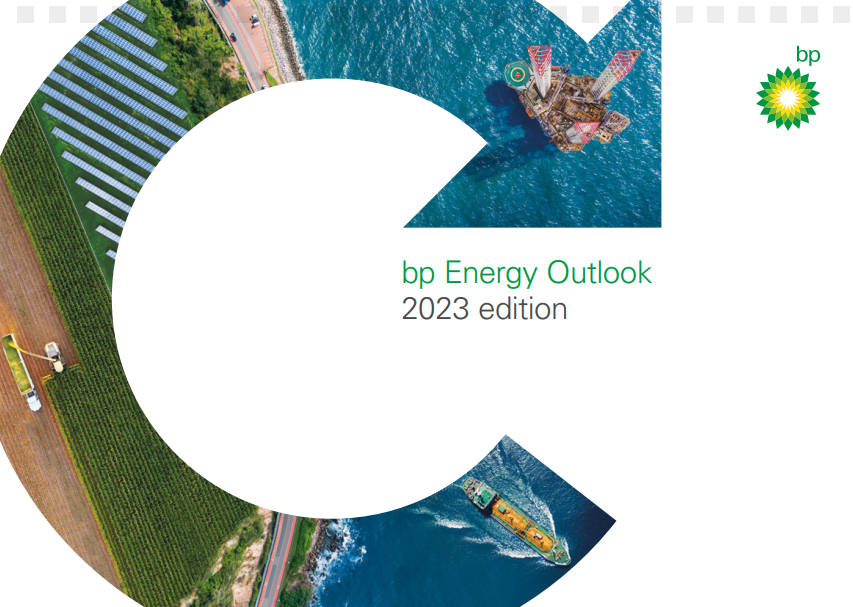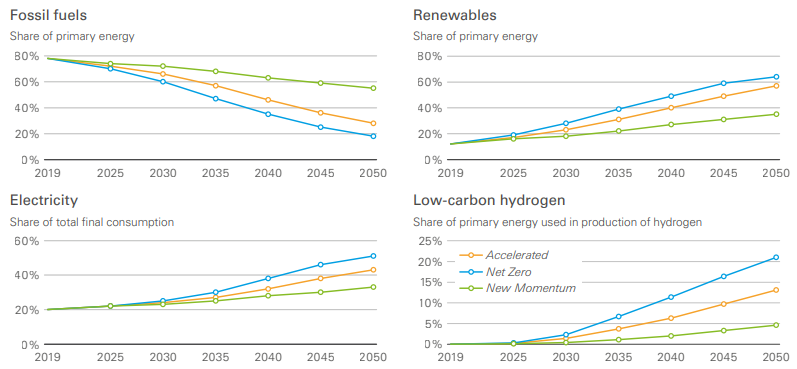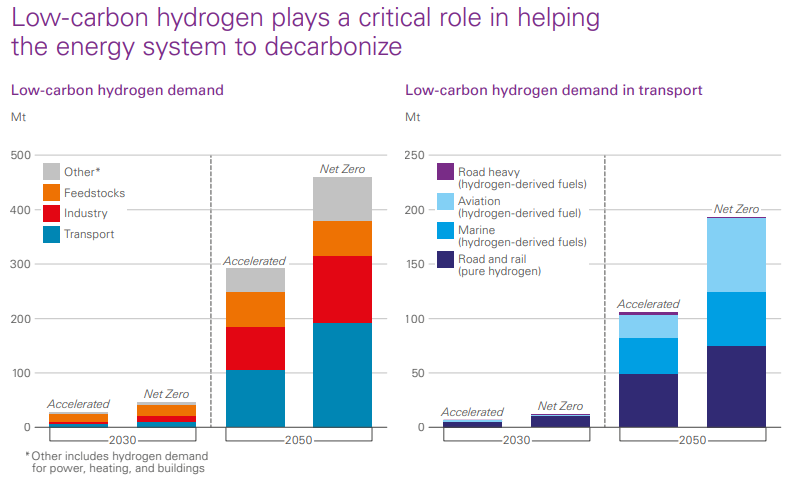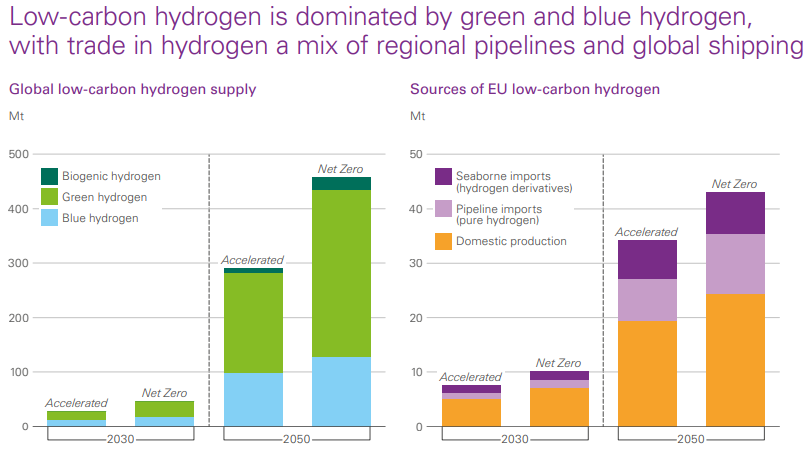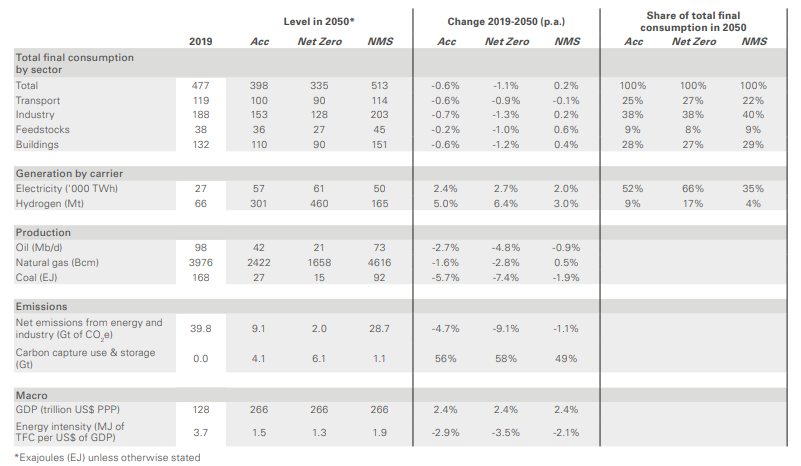- English
- Español
- Português
- русский
- Français
- 日本語
- Deutsch
- tiếng Việt
- Italiano
- Nederlands
- ภาษาไทย
- Polski
- 한국어
- Svenska
- magyar
- Malay
- বাংলা ভাষার
- Dansk
- Suomi
- हिन्दी
- Pilipino
- Türkçe
- Gaeilge
- العربية
- Indonesia
- Norsk
- تمل
- český
- ελληνικά
- український
- Javanese
- فارسی
- தமிழ்
- తెలుగు
- नेपाली
- Burmese
- български
- ລາວ
- Latine
- Қазақша
- Euskal
- Azərbaycan
- Slovenský jazyk
- Македонски
- Lietuvos
- Eesti Keel
- Română
- Slovenski
- मराठी
- Srpski језик
International hydrogen | BP released 2023 "world energy outlook"
2023-02-06
On January 30, British Petroleum (BP) released the 2023 "World Energy Outlook" report, emphasizing that fossil fuels in the short term is more important in the energy transition, but the global energy supply shortage, carbon emissions continue to increase and other factors are expected to accelerate the green and low-carbon transition, the report put forward four trends of global energy development, and forecast the low hydrocarbon development to 2050.
The report points out that in the short term, fossil fuels will play an important role in the energy transition process, but the global energy shortage, the continuous increase of carbon emissions and the frequent occurrence of extreme weather will accelerate the global energy green and low-carbon transition. An efficient transition needs to simultaneously address energy security, affordability and sustainability; The global energy future will show four major trends: the declining role of hydrocarbon energy, the rapid development of renewable energy, the increasing degree of electrification, and the continued growth of low hydrocarbon use.
The report assumes the evolution of energy systems through 2050 under three scenarios: accelerated transition, net zero and new power. The report suggests that under the accelerated transition scenario, carbon emissions would be reduced by about 75%; In the net-zero scenario, carbon emissions will be reduced by more than 95; Under the new dynamic scenario (which assumes that the overall situation of world energy development in the past five years, including technological progress, cost reduction, etc., and global policy intensity will remain unchanged in the next five to 30 years), global carbon emissions will peak in the 2020s and reduce global carbon emissions by about 30% by 2050 compared with 2019.
The report argues that low hydrocarbons play a key role in the low-carbon energy transition, especially in industries, transportation and other sectors that are difficult to electrify. Green hydrogen and blue hydrogen are the main low hydrocarbon, and the importance of green hydrogen will be enhanced with the process of energy transformation. Hydrogen trade includes regional pipeline trade for transporting pure hydrogen and maritime trade for hydrogen derivatives.
The report predicts that by 2030, under the accelerated transition and net zero scenarios, low hydrocarbon demand will reach 30 million tons/year and 50 million tons/year, respectively, with most of these low hydrocarbons being used as energy sources and industrial reducing agents to replace natural gas, coal-based hydrogen (used as industrial raw materials for refining, producing ammonia and methanol) and coal. The rest will be used in chemicals and cement production.
By 2050, steel production will use about 40% of total low hydrocarbon demand in the industrial sector, and under the accelerated transition and net zero scenarios, low hydrocarbons will account for about 5% and 10% of total energy use, respectively.
The report also predicts that, under the accelerated transition and net zero scenarios, hydrogen derivatives will account for 10 per cent and 30 per cent of aviation energy demand and 30 per cent and 55 per cent of Marine energy demand, respectively, by 2050, with most of the rest going to the heavy road transport sector; By 2050, the sum of low hydrocarbons and hydrogen derivatives will account for 10% and 20% of total energy use in the transport sector, respectively, under the accelerated transition and net zero scenarios.
Currently, the cost of blue hydrogen is usually lower than that of green hydrogen in most parts of the world, but the cost difference will gradually narrow as green hydrogen manufacturing technology advances, production efficiency increases and the price of traditional fossil fuels increases, the report said. Under the accelerated transition and net-zero scenario, the report predicts that green hydrogen will account for about 60 per cent of total low hydrocarbon by 2030, rising to 65 per cent by 2050.
The report also suggests that the way hydrogen is traded will vary depending on the end use. For applications requiring pure hydrogen (such as industrial high-temperature heating processes or road vehicle transport), the demand can be imported from the relevant areas through pipelines; For areas where hydrogen derivatives are needed (such as ammonia and methanol for ships), the cost of transport via hydrogen derivatives is relatively low and the demand can be imported from the most cost-advantagedcountries worldwide.
In the European Union, for example, the report predicts that under the accelerated transition and net-zero scenario, the EU will produce about 70% of its low hydrocarbons by 2030, falling to 60% by 2050. Of the low hydrocarbon imports, about 50 per cent of pure hydrogen will be imported through pipelines from North Africa and other European countries (e.g. Norway, the UK), and the other 50 per cent will be imported by sea from the global market in the form of hydrogen derivatives.


